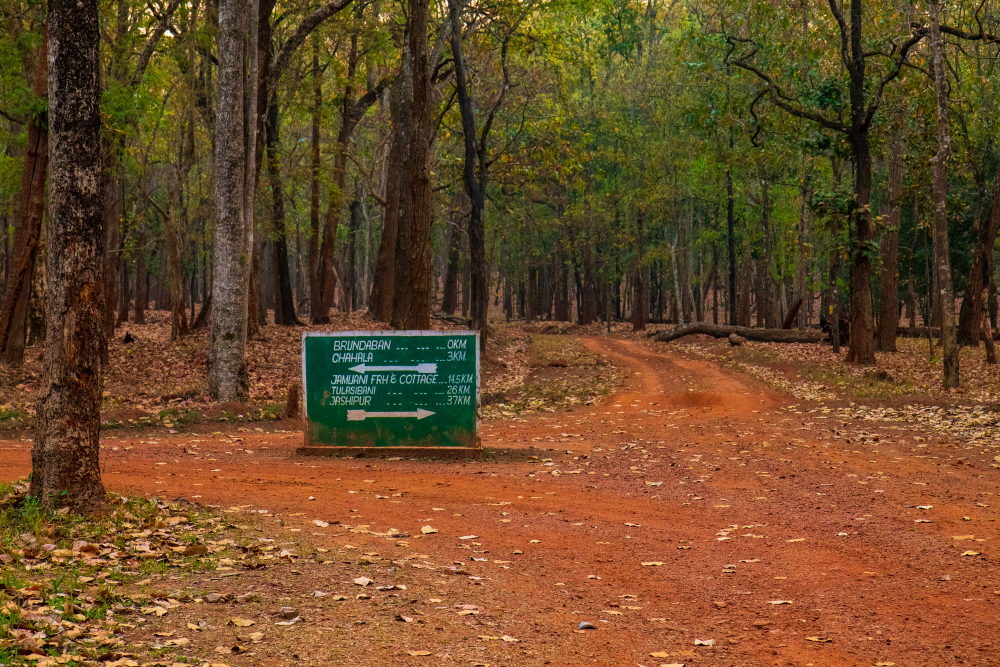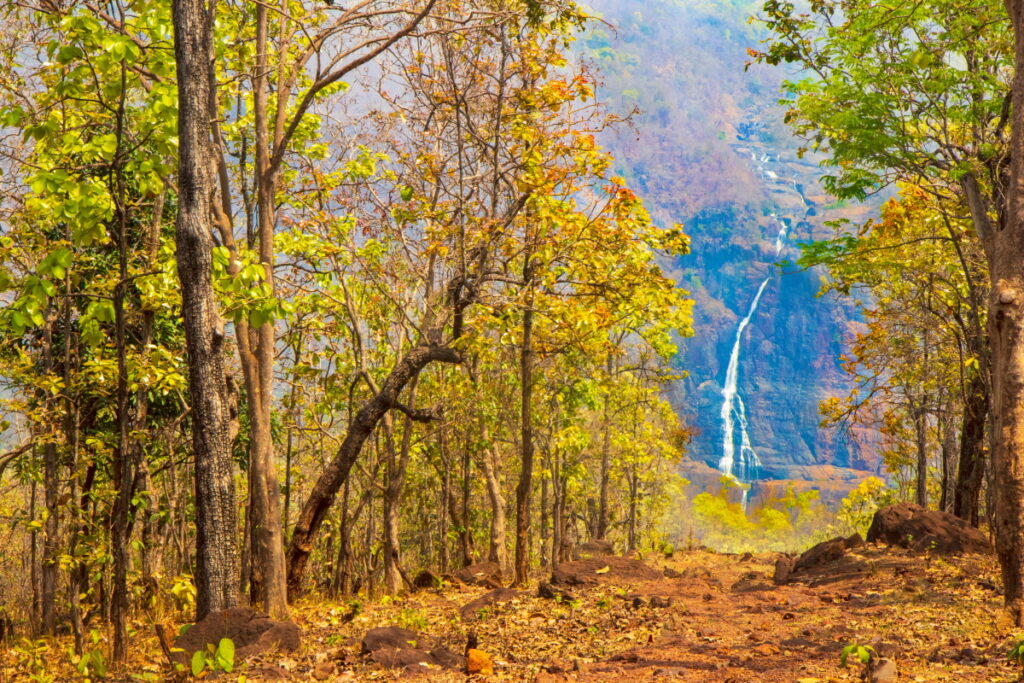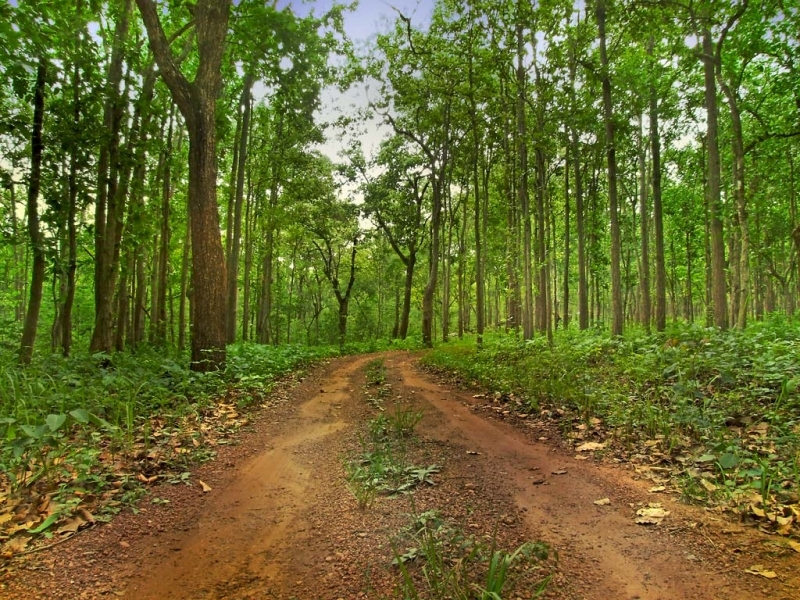Similipal Biosphere Reserve is a stunning treasure nestled in the eastern state of Odisha, India. Spread across an area of approximately 2750 square kilometers, this rich and diverse sanctuary is a natural wonder that has stood the test of time, showcasing the genesis of historicity.
The Similipal Biosphere Reserve was established in 1986 and was later designated as a UNESCO Biosphere Reserve in 2009. It is home to a vast variety of flora and fauna, making it one of the most important and popular wildlife destinations in India.
The biosphere is named after the Similipal mountain range, which is the highest peak within the reserve. The name ‘Similipal’ is derived from the ‘Simul’ trees (silk cotton tree) that are abundantly found in this area. The lush green forests, rolling hills, mesmerizing waterfalls, and pristine rivers all contribute to the breathtaking beauty of Similipal.

One of the most fascinating aspects of Similipal Biosphere Reserve is its rich history. The region has been inhabited by indigenous tribes for centuries, who have coexisted harmoniously with nature. The tribes, such as the Ho, Santal, Bhumij, and Munda, have their distinct cultural identities and have preserved their way of life amidst the challenges of modern times.
The biosphere also boasts a significant historical legacy. It is home to ancient rock art and petroglyphs, providing a glimpse into the lives of the early settlers who roamed these lands thousands of years ago. These rock carvings depict scenes of daily life, hunting, and religious rituals, giving us insights into the artistic and cultural heritage of the region.
Similipal Biosphere Reserve is not only culturally and historically significant but also a haven for a vast array of wildlife. The reserve is home to several endangered species, including the Royal Bengal Tiger, Asian Elephant, Indian Bison, and Indian Wild Dog. It is a paradise for bird watchers as well, with over 230 species of birds inhabiting the region.
You can read our another post on Odisha : A Place for Aesthetic Experience

The ecosystem here is incredibly diverse, with several types of forests, including tropical moist deciduous, dry deciduous, and tropical semievergreen forests. These forests provide habitat to a variety of plant species, many of which are found only in this part of the world. The Sal tree (Shorea robusta) dominates the landscape, along with other species like bamboo, orchids, and medicinal plants.
Apart from its ecological and cultural significance, Similipal Biosphere Reserve plays a vital role in maintaining the ecological balance of the region. The reserve acts as a natural buffer zone, protecting the surrounding areas from soil erosion, floods, and climate change. It is also a source of water for many rivers and provides livelihood opportunities to nearby communities through eco-tourism and sustainable forest management practices.
Efforts are being made to conserve and protect the natural heritage of Similipal Biosphere Reserve. The local communities, forest department, and various conservation organizations work to raise awareness, prevent poaching, promote sustainable tourism, and preserve the delicate ecosystem.
Visiting Similipal Biosphere Reserve is an experience unlike any other. The sheer beauty, the abundance of wildlife, the rich history, and the warm hospitality of the local communities make it a must-visit destination for nature enthusiasts and explorers. So, if you’re looking to reconnect with the wonders of nature and witness the genesis of historicity, Similipal Biosphere Reserve is the place to be.

Writer A FAQ For Similipal Biosphere : Genesis of Historicity
What is the Similipal Biosphere Reserve and why is it considered important?
The Similipal Biosphere Reserve is a vast protected area located in the state of Odisha, India. It is considered important due to its rich biodiversity and unique ecosystem. The reserve is home to several endangered species, including the Bengal tiger and Asian elephant. It also serves as a vital watershed and supports the livelihoods of local communities.
What is the concept of “Genesis of Historicity” in relation to Similipal Biosphere Reserve?
“Genesis of Historicity” refers to the ancient origins and historical significance of the Similipal Biosphere Reserve. The region has been inhabited by indigenous communities for centuries and has witnessed the rise and fall of several civilizations. The concept highlights the cultural and historical heritage of the area and emphasizes the need for its preservation and sustainable development.
What are the main threats to the Similipal Biosphere Reserve?
The Similipal Biosphere Reserve faces various threats, including illegal hunting and poaching, habitat destruction due to deforestation and mining activities, encroachment by human settlements, and climate change. These factors jeopardize the delicate balance of the ecosystem and the survival of many plant and animal species.
What conservation efforts are being undertaken to protect the Similipal Biosphere Reserve?
The government, along with non-governmental organizations and local communities, is engaged in numerous conservation efforts to protect the Similipal Biosphere Reserve. These include implementing anti-poaching measures, promoting sustainable livelihoods for local communities, conducting research on biodiversity, reforestation initiatives, and raising awareness about the importance of conservation among the public.
Can tourists visit the Similipal Biosphere Reserve and are there any rules they need to follow?
Yes, tourists can visit the Similipal Biosphere Reserve, but certain rules and guidelines must be followed to minimize disturbance to the environment and wildlife. Visitors are required to obtain permits from the forest department, follow designated trails, and refrain from littering or causing any harm to the flora and fauna. It is also important to respect the cultural traditions and customs of the local communities living in and around the reserve.
